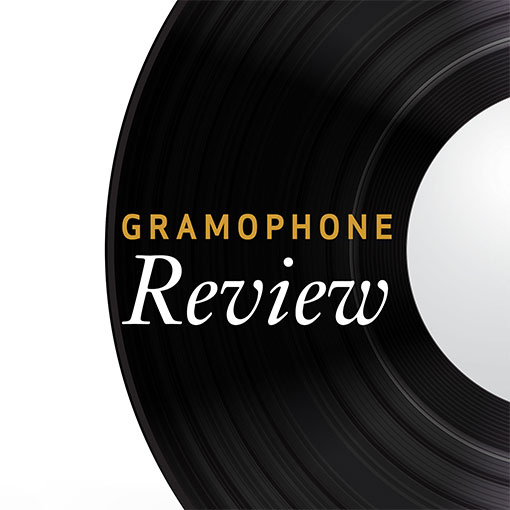Börtz Orchestral Works
View record and artist detailsRecord and Artist Details
Composer or Director: Daniel Börtz
Label: New Direction
Magazine Review Date: 2/1997
Media Format: CD or Download
Media Runtime: 68
Mastering:
DDD
Catalogue Number: CHAN9473

Tracks:
| Composition | Artist Credit |
|---|---|
| Sinfonia No. 1 |
Daniel Börtz, Composer
(Royal) Stockholm Philharmonic Orchestra Daniel Börtz, Composer Gennady Rozhdestvensky, Conductor |
| Strindberg Suite |
Daniel Börtz, Composer
(Royal) Stockholm Philharmonic Orchestra Daniel Börtz, Composer Gennady Rozhdestvensky, Conductor |
| Sinfonia No. 7 |
Daniel Börtz, Composer
(Royal) Stockholm Philharmonic Orchestra Daniel Börtz, Composer Gennady Rozhdestvensky, Conductor |
| Parodos |
Daniel Börtz, Composer
(Royal) Stockholm Philharmonic Orchestra Daniel Börtz, Composer Gennady Rozhdestvensky, Conductor |
Author: Robert Layton
Daniel Bortz is a Swedish composer now in his early fifties with an impressive output to his credit. He studied privately with Hilding Rosenberg and then in Stockholm with Karl-Birger Blomdahl and Ingvar Lidholm. He subsequently interested himself in electronic music, which he studied at the University of Utrecht. In the 1970s he composed two church operas but it was not until 1991 – when his opera, The Bacchantes, to a libretto of Ingmar Bergman, was mounted at the Royal Opera in Stockholm – that he enjoyed a major success. This opera was subsequently recorded on Caprice. I mention his background since Bo Wallner’s notes only discuss the music itself, and his work is not widely known outside specialized circles in Britain.
The Sinfonia No. 1 was composed in 1973, when Bortz was 30, in response to a commission from the Gothenburg Symphony Orchestra. It is evident at once that he possesses a refined aural imagination and has the gift of being able to compel the listener’s attention. Much of the music is static and there is extensive use of chord clusters. If you like music that starts somewhere and conveys a sense of movement, then this is probably not for you. This symphony is not dynamic and forward-moving in that sense. Instead, Bortz concentrates on evoking strong contrasts and powerful spatial effects, both here and in the Sinfonia No. 7 (1984-6). His world may be limited in some respects (some listeners may well tire, as in the end I did, of the repertory of effects on which he draws) but at least he creates a world to which it is possible to respond, which is more than so many contemporary composers do.
The four-movement Strindberg Suite of 1993 is powerfully wrought, often arresting and at times highly atmospheric. Whether or not you respond positively to Bortz’s musical language, there is no doubting the excellence of the Royal Stockholm Philharmonic. Their playing in all departments is of the highest quality and the Chandos recording absolutely state-of-the-art. Made at the Stockholm Concert Hall, it should be heard in every hi-fi demonstration room, for in terms of clarity, presence and detail, and at the same time naturalness of balance, it is quite outstanding. Track 5, the Furioso section of the Strindberg Suite, will give you some idea of its excellence. An interesting issue.'
The Sinfonia No. 1 was composed in 1973, when Bortz was 30, in response to a commission from the Gothenburg Symphony Orchestra. It is evident at once that he possesses a refined aural imagination and has the gift of being able to compel the listener’s attention. Much of the music is static and there is extensive use of chord clusters. If you like music that starts somewhere and conveys a sense of movement, then this is probably not for you. This symphony is not dynamic and forward-moving in that sense. Instead, Bortz concentrates on evoking strong contrasts and powerful spatial effects, both here and in the Sinfonia No. 7 (1984-6). His world may be limited in some respects (some listeners may well tire, as in the end I did, of the repertory of effects on which he draws) but at least he creates a world to which it is possible to respond, which is more than so many contemporary composers do.
The four-movement Strindberg Suite of 1993 is powerfully wrought, often arresting and at times highly atmospheric. Whether or not you respond positively to Bortz’s musical language, there is no doubting the excellence of the Royal Stockholm Philharmonic. Their playing in all departments is of the highest quality and the Chandos recording absolutely state-of-the-art. Made at the Stockholm Concert Hall, it should be heard in every hi-fi demonstration room, for in terms of clarity, presence and detail, and at the same time naturalness of balance, it is quite outstanding. Track 5, the Furioso section of the Strindberg Suite, will give you some idea of its excellence. An interesting issue.'
Discover the world's largest classical music catalogue with Presto Music.

Gramophone Digital Club
- Digital Edition
- Digital Archive
- Reviews Database
- Full website access
From £8.75 / month
Subscribe
Gramophone Full Club
- Print Edition
- Digital Edition
- Digital Archive
- Reviews Database
- Full website access
From £11.00 / month
Subscribe
If you are a library, university or other organisation that would be interested in an institutional subscription to Gramophone please click here for further information.





